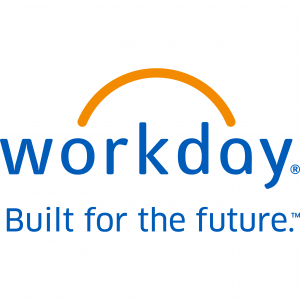This blog is an excerpt from GovLoop’s recent guide, “Tech Priorities for a Modern State and Local Government.”
The role of human resources in state and local government has shifted from a strictly administrative entity to one that is more holistically involved in all aspects of government employment. As HR’s function in government agencies continues to evolve, the solutions and processes they use to get the job done must modernize as well.
To learn more about solutions that can help evolving state and local government HR departments succeed, GovLoop sat down with Sherry Amos, Director of Education and Government Market Development at Workday, a leader in strategic workforce planning and analytics.
Government HR started changing in the years after the most recent economic recession. “The recession brought significant layoffs in various areas of government, specifically at the state and local level,” Amos explained. “Budget cuts and staffing count reductions meant that during those years, HR was trying to manage a changing workforce that was difficult to recruit for and bring in new talent.”
It was during this time that government HR leaders started thinking about how they could bring modern workforce management practices and tools into the government sphere. Instead of focusing solely on the administrative components of government human resources, leaders were able to start practicing proactive recruitment efforts and ways they could improve the employment cycle in government.
However, in order to truly achieve a more proactive approach to HR, government still needs to improve the way they leverage modern technology solutions. Older systems in HR departments often use a core payroll system that can’t handle new add-ons like recruiting, performance management, or compensation management. “As a result, HR departments have begun looking at modern solutions to bring all of those capabilities into a unified environment, and more importantly, into a cloud environment,” Amos said.
Many agencies are starting to see the benefits of cloud technology and have moved various workloads to the cloud. “Leveraging cloud solutions allows HR leaders to build and sustain a government workforce for the future,” Amos said.
She also offered two main ways that cloud solutions improve efficiency and effectiveness in HR processes. First, it reduces the requirement and cost for the government to operate their own datacenters. “Early on, we saw the efficiencies of datacenter consolidation, reducing infrastructure and over time, the cost savings, benefits, and efficiencies of letting third parties manage that infrastructure became quite clear to government,” she said. The cost savings offered by cloud-based workforce management solutions can provide relief for over-stretched budgets as many states are reporting general fund revenues below projections thus far for FY2017.
Second, cloud providers can invest much more into security infrastructure than government agencies can by themselves. “For governments, it’s difficult to keep up with security when they have such a wide array of system types, so it is critical that they start getting comfortable with the paradigm of cloud security.” With security topping NASCIO’s State CIO Top 10 Priorities for 2017 state and local HR teams can leverage third party security practices to protect workforce data without compromising functionality.
Additionally, shared services across the government enterprise are helping HR departments, and government as a whole, implement cloud solutions more effectively. Leveraging shared services and horizontal functions across the government allows agencies to utilize one solution that is serving the entire enterprise. This is particularly important in state and local governments because it allows agencies to cohesively embrace modern workforce management programs and tools in a seemingly disjointed enterprise.
Workday can help government achieve modern workforce management practices through its unique approach to workforce management. “What makes Workday stand out is that we start with a clean sheet of paper in our design solution,” Amos explained. Workday operates as a unified model that compiles all the data and security into one archetype that is delivered with a common set of business processes across state and local agencies.
Additionally, Workday’s solution is mobile at the core. “This is another key differentiator for us because we build our solutions to be mobile first so agencies don’t have to acquire additional technology to generate mobile capabilities for their workforce,” Amos explained. This enables increased productivity by allowing employees to perform traditionally paper-based task like submitting expense reports, reviewing their paycheck, or signing up for enrollment benefits from their phone or mobile device.
Looking forward, state and local governments have to be ready to embrace these new technologies in order to drive efficiency. Concluded Amos, “Once government gets comfortable with cloud and their major administrative systems being in the cloud, and once they start to see what the shared service environment can deliver, they can clearly see the benefits gained and innovation that will keep them modernized into the future.”
For more information about how to innovate state and local government, you can find the full guide here.






Leave a Reply
You must be logged in to post a comment.